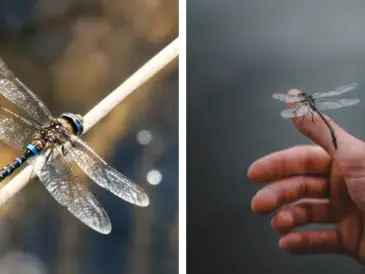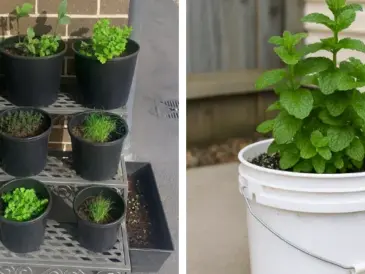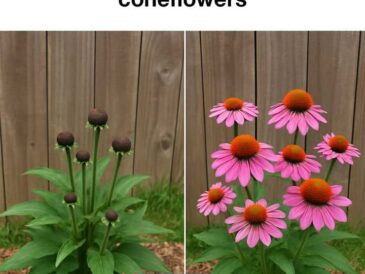Few houseplants capture curiosity and admiration quite like the String of Pearls (Senecio rowleyanus).
With its trailing strands of perfectly spherical leaves resembling green pearls on a necklace, it’s an eye-catching addition to any collection.
But beyond its cascading beauty lies a delightful secret – under the right conditions, a String of Pearls can produce small, creamy-white flowers that carry a highly fragrant, sweet, cinnamon-like scent.
These blooms are rare in cultivation and many plant owners go years without ever seeing them. Yet, with the right knowledge and care techniques, you can unlock this plant’s full potential and encourage it to flower.
Understanding String of Pearls and Its Blooming Behavior
The String of Pearls is a succulent native to the arid regions of Southwest Africa. In its natural habitat, it sprawls over rocky ground or cascades from crevices, thriving in bright light, low humidity, and well-draining soils.
Why String of Pearls Rarely Blooms Indoors
In nature, the String of Pearls blooms in response to seasonal changes, including:
- Shorter daylight hours during fall and winter.
- Cooler nighttime temperatures.
- Periods of reduced watering.
These conditions signal the plant to produce flowers in spring. Indoors, however, steady temperatures, artificial lighting, and consistent watering often suppress flowering triggers.
Understanding this natural rhythm is crucial for replicating the cues that encourage blooming.

The Beauty of String of Pearls Flowers
When it blooms, the String of Pearls produces clusters of small, brush-like flowers, typically white to creamy in color.
Each flower is topped with delicate purple or red stamens and releases a sweet, spicy fragrance reminiscent of cinnamon or cloves.
While not as visually striking as the foliage, these flowers:
- Attract pollinators in nature.
- Add a delightful scent indoors.
- Signal that your plant is thriving.
Achieving blooms is a mark of success in caring for this unique succulent.
10 Steps to Make Your String of Pearls Bloom
Let’s dive into proven techniques to encourage blooming. These methods combine environmental adjustments with precise care routines to mimic the plant’s natural triggers.
1. Provide Plenty of Bright Light
Light is the number one factor in achieving blooms. String of Pearls needs:
- Bright, indirect sunlight for at least 6 hours daily.
- Protection from harsh midday sun, which can scorch leaves.
- Supplemental grow lights if natural light is limited.
Indoor growers often underestimate how much light this succulent needs, stunting both foliage growth and flowering potential.
Tip: A south-facing window is ideal, filtered with sheer curtains to diffuse direct rays.
2. Follow a Natural Daylight Cycle
To trigger blooms, simulate seasonal daylight changes:
- In fall and winter, reduce light exposure to 10-12 hours daily.
- Avoid artificial lights in the evening during these months.
Shorter days mimic the plant’s native environment, signaling the approach of its blooming season.
3. Lower Winter Temperatures
Cooler temperatures are a powerful flowering trigger. From late fall through winter:
- Keep nighttime temperatures between 50-55°F (10-13°C).
- Maintain daytime temperatures around 60-65°F (15-18°C).
Avoid drafts, but don’t keep your plant in a warm living room 24/7 if you want blooms.
Note: Sudden drops in temperature can shock the plant. Lower temps gradually.
4. Reduce Watering in Winter
Overwatering prevents dormancy – a crucial step for flowering.
During fall and winter:
- Allow soil to dry out completely between waterings.
- Water sparingly, perhaps once every 3-4 weeks, depending on humidity.
This dry period mimics the plant’s natural environment, where rain is scarce during cooler seasons.
Warning: Don’t let stems shrivel excessively, as this can stress the plant.
5. Resume Regular Watering in Spring
As daylight lengthens and temperatures warm:
- Increase watering gradually.
- Keep soil lightly moist but never soggy.
- Water thoroughly when the top inch of soil is dry.
This transition tells the plant it’s time to grow – and bloom.
6. Fertilize Sparingly
While succulents need little fertilizer, blooming requires some nutrients. During the active growing season (spring and summer):
- Feed monthly with a balanced, diluted succulent fertilizer.
- Avoid high-nitrogen fertilizers, which encourage leafy growth over blooms.
A fertilizer ratio like 5-10-10 (lower nitrogen, higher phosphorus) is ideal for flowering.
7. Avoid Repotting Before Blooming
Repotting disrupts the root system and diverts energy away from flowering.
If you plan to repot:
- Do it immediately after flowering.
- Use a well-draining succulent mix.
- Choose a slightly larger pot if necessary.
Avoid repotting during winter dormancy or right before the flowering season.
8. Provide Excellent Air Circulation
Stagnant air can lead to fungal issues that weaken your plant.
Keep air moving by:
- Running a ceiling fan on low.
- Opening a window for gentle breezes (when temperatures permit).
Healthy airflow reduces stress and improves overall plant vigor.
9. Prune Strategically
Light pruning can stimulate new growth and encourage flowering.
In early spring:
- Trim leggy or damaged strands.
- Cut just above a node to promote branching.
However, avoid heavy pruning before blooming season, as this may delay or reduce flower production.
10. Check for Pests and Stress
Healthy plants bloom more readily. Inspect your String of Pearls regularly for:
- Mealybugs or spider mites hiding between pearls.
- Root rot from overwatering.
- Shriveling due to underwatering.
Early intervention keeps your plant robust enough to support flowering.

The Best Potting Mix for String of Pearls
Proper soil is vital for both growth and blooming.
Use a mix that provides:
- Excellent drainage.
- Moderate organic content.
- Aeration to prevent waterlogging.
A good homemade mix might include:
- 50% succulent or cactus mix.
- 25% perlite or pumice for drainage.
- 25% coarse sand or fine orchid bark for airflow.
This combination prevents soggy roots, ensuring your plant has the strength to produce blooms.
Common Reasons String of Pearls Doesn’t Bloom
Despite your best efforts, sometimes blooms remain elusive.
Common culprits include:
- Insufficient light. A major reason for lack of flowering.
- Consistently warm temperatures. Without cooler winters, flowering triggers don’t activate.
- Overwatering during winter. Prevents dormancy.
- Nutrient deficiencies. Lack of phosphorus reduces blooms.
- Stress from pests or root problems.
Addressing these issues improves your chances dramatically.
How Long Do String of Pearls Blooms Last?
Once blooming begins:
- Flowers may last 2-6 weeks, depending on temperature and humidity.
- Each bloom cluster opens gradually, extending the display.
- The fragrance is strongest in the first few days after opening.
After blooming, the plant may enter a brief rest period before resuming active growth.
Enjoying the Fragrance of String of Pearls Flowers
One of the most delightful surprises about String of Pearls blooms is their scent.
Described as:
- Sweet and spicy.
- Similar to cinnamon or cloves.
- Light but noticeable.
To fully enjoy the fragrance:
- Keep your plant in a location with gentle airflow.
- Place it near living areas while flowering for maximum scent enjoyment.
Propagating String of Pearls After Blooming
Post-blooming is a great time to propagate your plant:
- Cut healthy strands about 4-6 inches long.
- Let cut ends dry for 1-2 days.
- Place cuttings on moist succulent soil.
- Keep lightly misted until roots form.
Within weeks, you’ll have new plants – and potentially more future blooms.
Can String of Pearls Bloom Indoors?
Absolutely. While blooming indoors is trickier than outdoors, many growers succeed with:
- Bright, indirect sunlight.
- Seasonal temperature fluctuations.
- Correct watering and feeding schedules.
Indoor blooms may be fewer but are just as fragrant and beautiful.
Encouraging a String of Pearls to bloom requires patience and a bit of finesse.
By mimicking the plant’s natural conditions – bright light, cooler winters, and a well-timed dry season – you can transform this beloved succulent into a blooming, fragrant spectacle.
Not only does flowering showcase your care skills, but it also lets you experience one of the succulent world’s hidden delights – a perfume that adds another layer of joy to your indoor garden.



